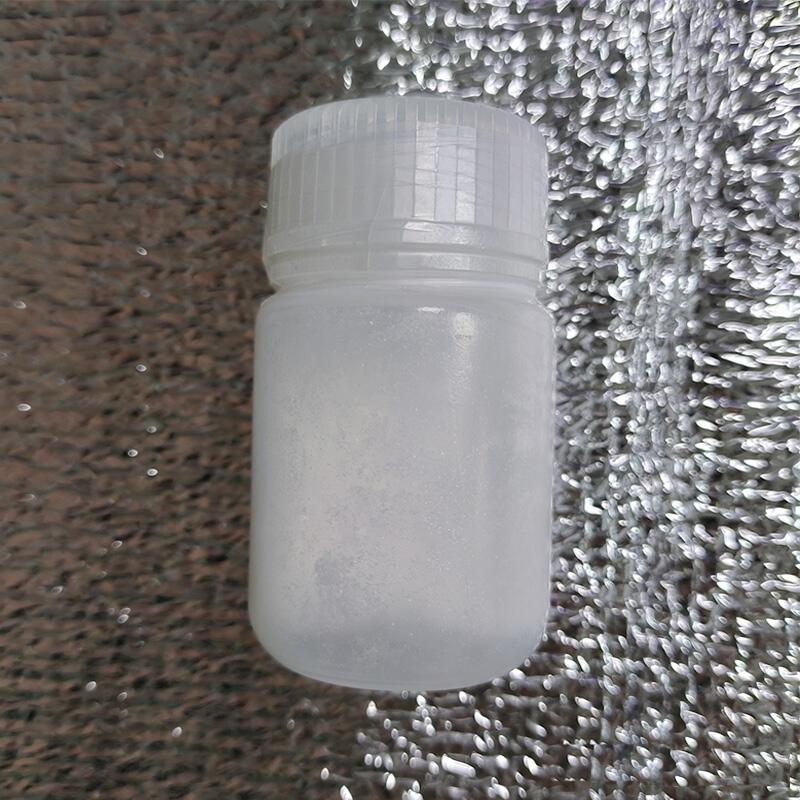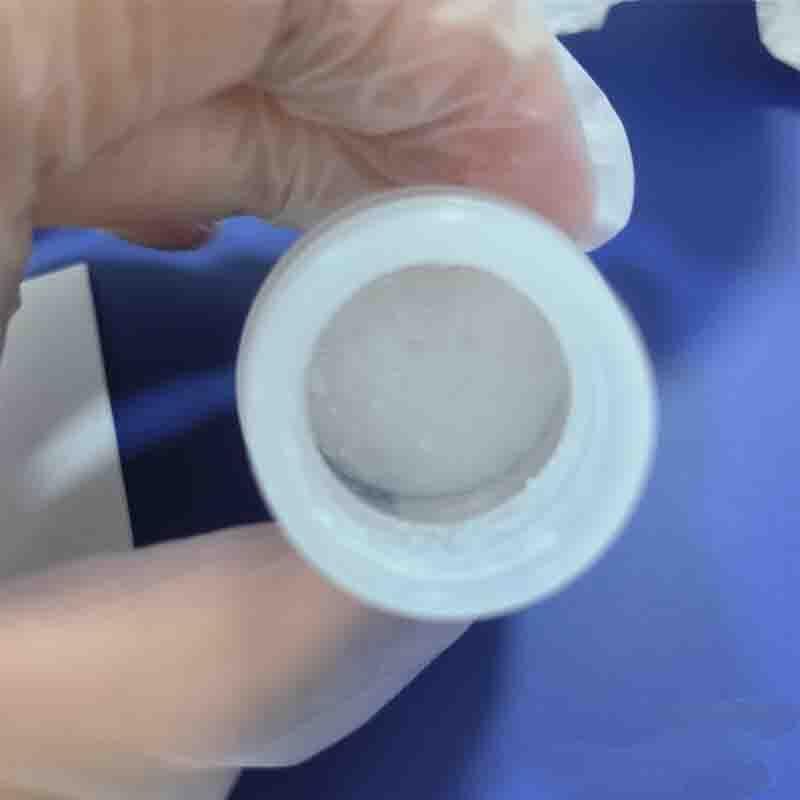-
Categories
-
Pharmaceutical Intermediates
-
Active Pharmaceutical Ingredients
-
Food Additives
- Industrial Coatings
- Agrochemicals
- Dyes and Pigments
- Surfactant
- Flavors and Fragrances
- Chemical Reagents
- Catalyst and Auxiliary
- Natural Products
- Inorganic Chemistry
-
Organic Chemistry
-
Biochemical Engineering
- Analytical Chemistry
-
Cosmetic Ingredient
- Water Treatment Chemical
-
Pharmaceutical Intermediates
Promotion
ECHEMI Mall
Wholesale
Weekly Price
Exhibition
News
-
Trade Service
Almost everyone has had this experience: intra-abdominal cramps, a gurgling sound accompanied by intestinal peristalsis, and the red alarm of "the city gate is about to fall" sounded in high decibels in the mind.
Almost everyone has had this experience: intra-abdominal cramps, a gurgling sound accompanied by intestinal peristalsis, and the red alarm of "the city gate is about to fall" sounded in high decibels in the mind.
The despair of diarrhea is too deep, especially on the highway, there is a saying: When you have a stomach, don’t believe any fart.
If this makes you desperate, what about people who suffer from repeated diarrhea and abdominal pain, which are severe enough to affect daily life, work and study, and the course of the disease is protracted, and even lasts for a lifetime?
They are patients with inflammatory bowel disease
They are patients with inflammatory bowel disease
Inflammatory bowel disease (IBD) is a chronic non-specific inflammatory bowel disease of unknown etiology, mainly including Crohn's disease and ulcerative colitis
Patients with inflammatory bowel disease not only suffer from abdominal pain and diarrhea.
Instead of simply attributing the anxiety and depression symptoms of IBD patients to the pain of the disease, scientists have focused on the gut-brain connection
We know that in the state of intestinal inflammation, the leakage of the intestinal vascular barrier increases, and the bacterial toxins in the intestinal lumen also enter the blood circulation, causing systemic systemic inflammation
Since the central nervous system has a complex vascular barrier, including the blood-brain barrier and the blood-cerebrospinal fluid barrier, under normal circumstances, the cerebral vascular barrier restricts the entry of macromolecular substances in the blood into the brain and maintains the internal environment of the brain tissue in a stable state
However, the researchers observed that during the acute phase of mouse colitis, the number of macrophages in the mouse brain increased.
Then, in the state of intestinal inflammation, how do the bacterial toxins from the intestine and the inflammatory factors in the blood enter the brain?
To this end, the researchers injected 70KDa dextran with fluorescent probes into the retro-orbital venous plexus of mice in the normal state, the acute enteritis period and the enteritis recovery period to observe the changes in the permeability of the cerebral vascular barrier
To this end, the researchers injected 70KDa dextran with fluorescent probes into the retro-orbital venous plexus of mice in the normal state, the acute enteritis period and the enteritis recovery period to observe the changes in the permeability of the cerebral vascular barrier
Researchers observed that on the first day of acute enteritis, the permeability of the cerebrovascular barrier increased, and fluorescent molecules gathered and penetrated into the brain choroid plexus area.
It shows that in the state of acute enteritis, the structure of the cerebrovascular barrier changes, although the permeability of the cerebrovascular barrier in the choroid plexus is temporarily increased at the initial stage, and then the cerebrovascular barrier is rapidly closed until the enteritis is restored, and then reopened
Intraperitoneal injection of bacterial endotoxin-lipopolysaccharide LPS, can also be observed in the brain of mice similar to the changes that occur in acute colitis-the choroid plexus blood-cerebrospinal fluid barrier is closed, indicating the influence of the presence of bacterial endotoxin Changes in the structure of the cerebrovascular barrier
Intraperitoneal injection of bacterial endotoxin-lipopolysaccharide LPS, can also be observed in the brain of mice similar to the changes that occur in acute colitis-the choroid plexus blood-cerebrospinal fluid barrier is closed, indicating the influence of the presence of bacterial endotoxin Changes in the structure of the cerebrovascular barrier
.
The research has progressed so far.
We already know that in the state of acute enteritis, the permeability of the intestinal vascular barrier increases, and the endotoxin produced by the intestinal bacteria enters the blood circulation, reaches the brain, changes the structure of the cerebral vascular barrier, and closes the brain barrier.
.
.
We already know that in the state of acute enteritis, the permeability of the intestinal vascular barrier increases, and the endotoxin produced by the intestinal bacteria enters the blood circulation, reaches the brain, changes the structure of the cerebral vascular barrier, and closes the brain barrier.
.
.
Wait, it seems a little bit different from what you imagined.
Since the brain barrier is closed, then, logically speaking, harmful substances cannot enter the brain and should not have further effects on the brain.
What about anxiety, depression, and even cognitive decline? What happened?
Since the brain barrier is closed, then, logically speaking, harmful substances cannot enter the brain and should not have further effects on the brain.
What about anxiety, depression, and even cognitive decline? What happened?
Is it caused by the increased permeability of the cerebral vascular barrier on the first day of acute enteritis? Or does diarrhea make mice and patients feel distressed every day?
Is it caused by the increased permeability of the cerebral vascular barrier on the first day of acute enteritis? Or does diarrhea make mice and patients feel distressed every day?The most wonderful step is here.
Researchers have designed a gene-edited mouse that can close the cerebrovascular barrier without intestinal inflammation and disease pain after injecting the inducing drug.
Then go to the research team.
Rat behavior
.
Researchers have designed a gene-edited mouse that can close the cerebrovascular barrier without intestinal inflammation and disease pain after injecting the inducing drug.
Then go to the research team.
Rat behavior
.
The researchers found that after the cerebrovascular barrier was closed, the mice showed anxiety-like behaviors and impaired contextual memory, but depressive behaviors did not
.
It turns out that mental symptoms, at least part of the key to the appearance of mental symptoms, are the closed cerebrovascular barrier!
.
It turns out that mental symptoms, at least part of the key to the appearance of mental symptoms, are the closed cerebrovascular barrier!
Up to this point, all events can finally be chained together: in a state of intestinal inflammation, harmful substances enter the blood, and the cerebrovascular barrier feels this "threat", and chooses to close it to prevent harmful substances from entering and maintain brain homeostasis.
However, outside communication is isolated, no harmful substances can enter, nor can beneficial substances enter, and the trash produced in the brain cannot be transported out.
At this time, mental symptoms will occur
.
However, outside communication is isolated, no harmful substances can enter, nor can beneficial substances enter, and the trash produced in the brain cannot be transported out.
At this time, mental symptoms will occur
.
Finally, there is still a problem left: Although we only see anxiety-like symptoms and cognitive decline after closing the vascular barrier in mice, if it is repeatedly induced to close the cerebrovascular barrier for a long period of time, can depressive symptoms be observed?
Finally, there is still a problem left: Although we only see anxiety-like symptoms and cognitive decline after closing the vascular barrier in mice, if it is repeatedly induced to close the cerebrovascular barrier for a long period of time, can depressive symptoms be observed?Secondly, in animal models, researchers have observed that the changes in the cerebral vascular barrier can return to its original state after the recovery of enteritis.
If it is a long-term recurrent enteritis, such as clinical IBD patients, the changes in the brain barrier structure will still pass.
Is it sexual, will it change permanently? These issues need to be further studied by scientists
.
If it is a long-term recurrent enteritis, such as clinical IBD patients, the changes in the brain barrier structure will still pass.
Is it sexual, will it change permanently? These issues need to be further studied by scientists
.
references:
References: References:1.
Ng, SC, et al.
, Incidence and phenotype of inflammatory bowel disease based on results from the Asia-pacific Crohn's and colitis epidemiology study.
Gastroenterology, 2013.
145(1): p.
158-165.
e2.
Ng, SC, et al.
, Incidence and phenotype of inflammatory bowel disease based on results from the Asia-pacific Crohn's and colitis epidemiology study.
Gastroenterology, 2013.
145(1): p.
158-165.
e2.
2.
Byrne, G.
, et al.
, Prevalence of Anxiety and Depression in Patients with Inflammatory Bowel Disease.
Can J Gastroenterol Hepatol, 2017.
2017: p.
6496727.
Byrne, G.
, et al.
, Prevalence of Anxiety and Depression in Patients with Inflammatory Bowel Disease.
Can J Gastroenterol Hepatol, 2017.
2017: p.
6496727.
3.
Dempsey, E.
, et al.
, Persistent central inflammation and region specific cellular activation accompany depression- and anxiety-like behaviours during the resolution phase of experimental colitis.
Brain Behav Immun, 2019.
80: p.
616-632.
Dempsey, E.
, et al.
, Persistent central inflammation and region specific cellular activation accompany depression- and anxiety-like behaviours during the resolution phase of experimental colitis.
Brain Behav Immun, 2019.
80: p.
616-632.
4.
Carloni, S.
, et al.
, Identification of a choroid plexus vascular barrier closing during intestinal inflammation.
Science, 2021.
374(6566): p.
439-448.
Carloni, S.
, et al.
, Identification of a choroid plexus vascular barrier closing during intestinal inflammation.
Science, 2021.
374(6566): p.
439-448.
Written by | Four Five Seven Edit | PP
Leave a message here







